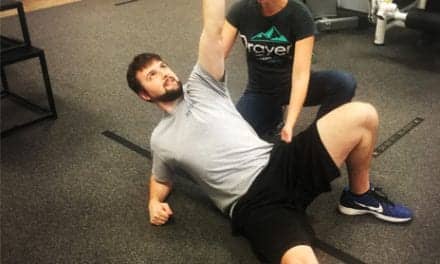A large-scale examination of yoga-related injuries commissioned by the Yoga Journal and Yoga Alliance notes that yoga is relatively safe, but participants—especially those who are older—should know their limits. In addition, it is important to use a qualified instructor.
In the Yoga in America Study, published recently in Orthopaedic Journal of Sports Medicine, researchers from the Center for Injury Sciences studied data from the National Electronic Injury Surveillance System compiled from 2001 to 2014.
According to the researchers, 36.7 million Americans participate in yoga. Among the participants, the overall rate of yoga-related injuries climbed to 17 per 100,000 in 2014, up from 10 per 100,000 in 2001. For those 65 and older, their injury rate of 58 per 100,000. Individuals ages 45-64 saw an injury rate of 18 per 100,000, while those between 18-44 years of age had an injury rate of 12 per 100,000.
Overall, the team found 29,590 yoga-related injuries during the study period. Nearly half were injuries to the trunk, and sprains or strains accounted for 45% of all injuries, explains a media release from University of Alabama at Birmingham.
“Yoga injuries are relatively rare, and as you might expect, the incidence tends to rise with the age of the participant,” says Thomas Swain, MPH, a research assistant at the Center for Injury Sciences and first author of the study, in the release. “We did find that the injury rate is increasing over time, which may be a reflection of the increase in popularity of yoga, leading to an increase in inexperienced participants who do not take the necessary precautions to avoid injury.”
“The incidence of fracture was highest in the older population, some three times higher than in the younger population,” Swain adds. “For all injuries, the actual risk might be higher than our numbers show, as we surveyed results only from those who sought medical attention in an emergency department.”
It is important that before beginning a yoga program, participants should be sure that they are physically capable of doing so, the scientists add.
“Talk to your physician before taking up yoga, be cautious, and recognize your personal limitations, particularly if you are over 65,” Swain states.
“Yoga is harder and more demanding than some people believe,” says Gerald McGwin, PhD, the director of the Center for Injury Sciences and a co-author of the study, in the release.
“You need a realistic view of your own abilities, and you need to understand that some poses might be too challenging and inappropriate. A qualified, certified yoga instructor can help you with that assessment and is essential to a safe experience,” he adds.
“There are many benefits to yoga, and overall our findings show it is relatively safe,” McGwin concludes. “But there is an injury risk, especially for older populations, and that risk should not be ignored.”
[Source(s): University of Alabama at Birmingham, Newswise]





